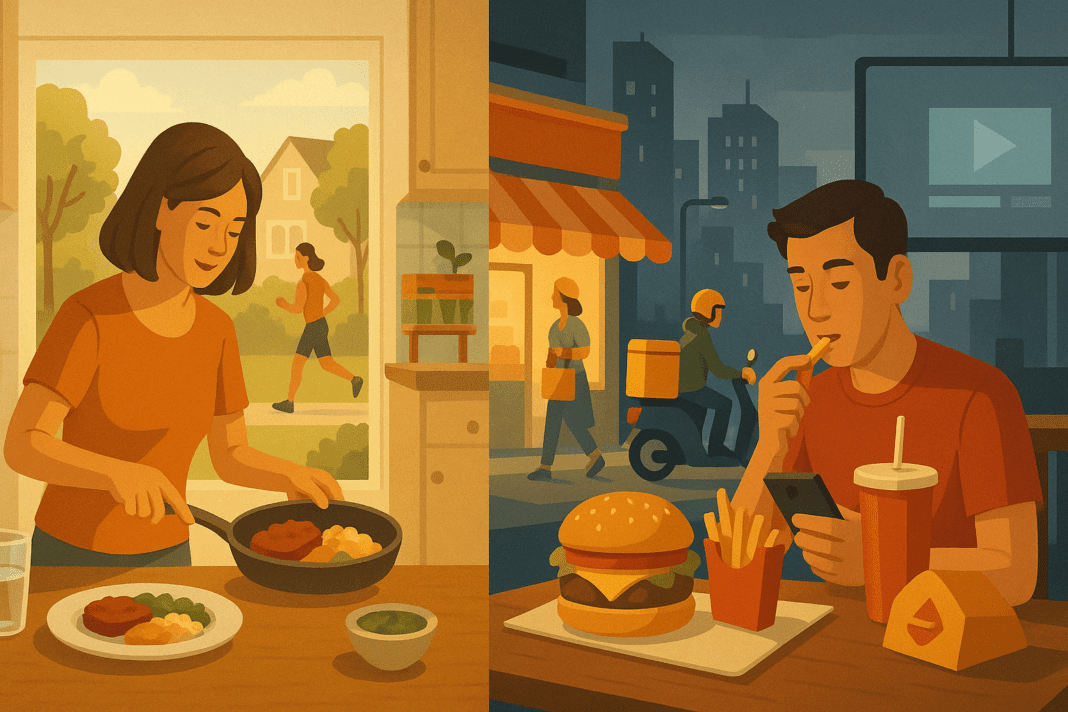The evolution of diet and nutrition over the past two decades has not only transformed what we eat but how much we consume. As technological, cultural, and economic changes ripple through society, they inevitably shape the dietary behaviors of entire populations. This article explores the layered question: can people eat more today than 20 years ago? To answer this, we must dive deep into historical trends, scientific studies, and behavioral research to unpack how our relationship with food has evolved.
You may also like: Best Foods for Cognitive Function: What Science Reveals About Brain Nourishment, Focus, and Mental Clarity
Understanding this transformation is more than just a history lesson; it is a reflection of global health priorities, market dynamics, public policy, and cultural identity. The question resonates across multiple disciplines—nutrition science, behavioral psychology, economics, and public health—making it a history changing topic in nutrition recent decades have brought to light. A nuanced understanding of this shift offers essential insights for anyone seeking to optimize health through diet in the modern world.
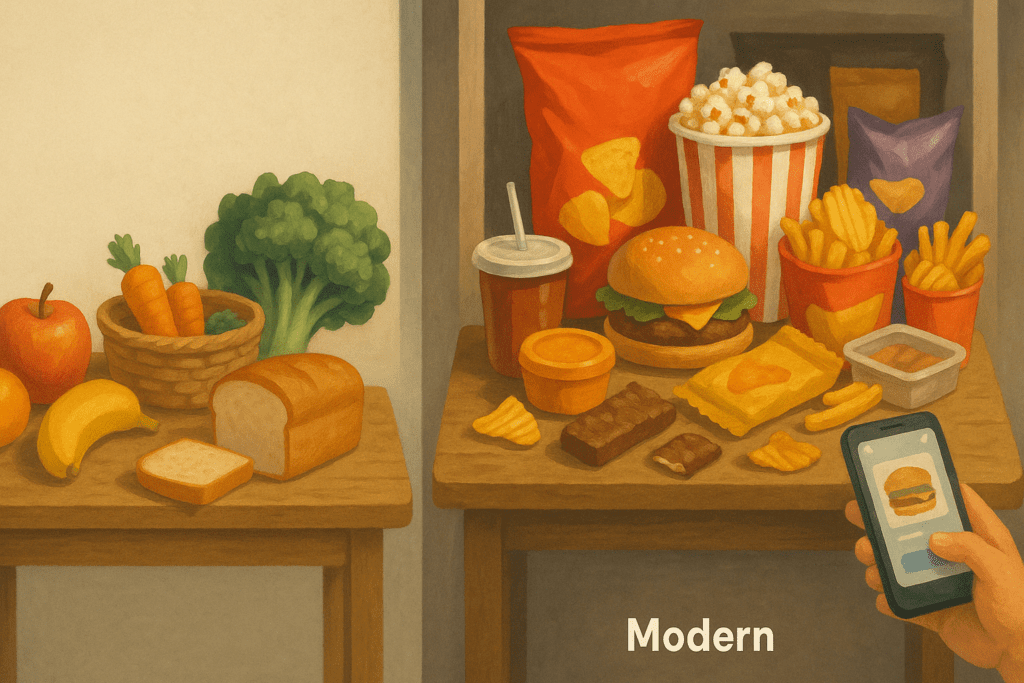
The Rise in Caloric Availability and Consumption
Perhaps the most measurable indicator of our dietary transformation lies in caloric availability. According to the Food and Agriculture Organization (FAO), per capita food availability globally increased by approximately 20% from the early 2000s to the 2020s. In industrialized nations like the United States, this figure is even higher, with daily per capita calorie availability rising from about 3,200 kcal in 2000 to over 3,600 kcal in 2020. This increase doesn’t inherently mean that everyone is overeating, but it highlights the sheer abundance of energy-dense foods available today.
Several factors contribute to this surge. Agricultural innovation, food processing technology, and global trade have made food cheaper and more accessible than ever. Convenience-driven lifestyles have fueled demand for pre-packaged, ultra-processed foods, which are often high in calories but low in satiety-inducing nutrients. Coupled with aggressive food marketing strategies, especially targeted at children and lower-income populations, these developments encourage frequent eating and larger portion sizes. These changes raise legitimate concerns about whether people can eat more today than 20 years ago due to environmental cues alone.
Moreover, the shift from traditional home-cooked meals to restaurant dining and food delivery apps further contributes to caloric excess. Research shows that meals prepared outside the home are typically higher in fat, sugar, and salt, while also providing larger portions. When considered alongside a decline in physical activity, it’s easy to understand why rising caloric intake has become a history changing topic in nutrition recent years have placed under scrutiny.
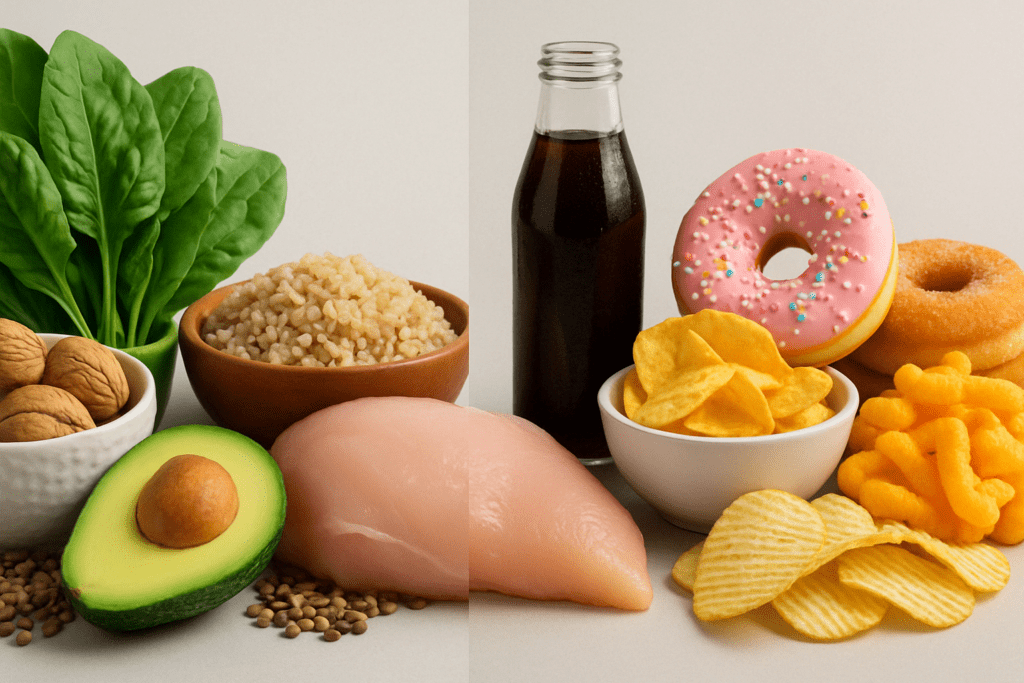
Nutrient Density vs. Caloric Density: A Critical Distinction
While increased caloric intake might suggest improved nutrition, the story is far more complex. The growing prevalence of calorie-rich but nutrient-poor foods reveals a troubling paradox: individuals can be overfed yet undernourished. This nutritional imbalance is a hallmark of modern dietary patterns and a key concern in assessing whether people eat more today than in the past.
Nutrient density refers to the amount of essential vitamins and minerals per calorie of food. Unfortunately, much of the increase in food consumption today is attributable to calorically dense but nutritionally weak products—sugary beverages, processed snacks, and fast food. This divergence between quantity and quality highlights a central concern in the evolution of modern eating: the decline of whole, minimally processed foods in favor of hyper-palatable, energy-dense options.
These trends have significant health implications. While the absolute availability of food has increased, so too has the incidence of micronutrient deficiencies, particularly in low-income populations. Ironically, in affluent societies, obesity and malnutrition can coexist within the same household. This dissonance underscores why the question of whether people can eat more today than 20 years ago must be framed not only in terms of volume but also in quality.

Behavioral Shifts in Eating Patterns and Frequency
Beyond what and how much we eat, the frequency and context of eating have dramatically changed over the past two decades. In the early 2000s, three meals a day was still the norm for many households. Fast forward to today, and snacking has become a near-constant activity, with studies indicating that Americans now consume food or beverages five to six times per day on average.
This grazing pattern disrupts traditional hunger and satiety cues, making it easier to consume excess calories without registering fullness. The food industry has capitalized on this shift by offering an endless array of portable, snack-sized products engineered for immediate gratification. Even workplace culture has adapted, with many offices providing free snacks and beverages that blur the lines between meals and mindless munching.
Digital distractions also play a role in altering eating behaviors. The ubiquity of smartphones, streaming platforms, and social media means more people are eating while distracted, which is associated with reduced awareness of food intake and increased total consumption. These lifestyle shifts highlight how behavioral cues—more than physiological hunger—now often dictate food choices and timing. In this context, it becomes even more plausible to argue that people can eat more today than 20 years ago, simply because they are prompted to eat more frequently and in larger quantities.
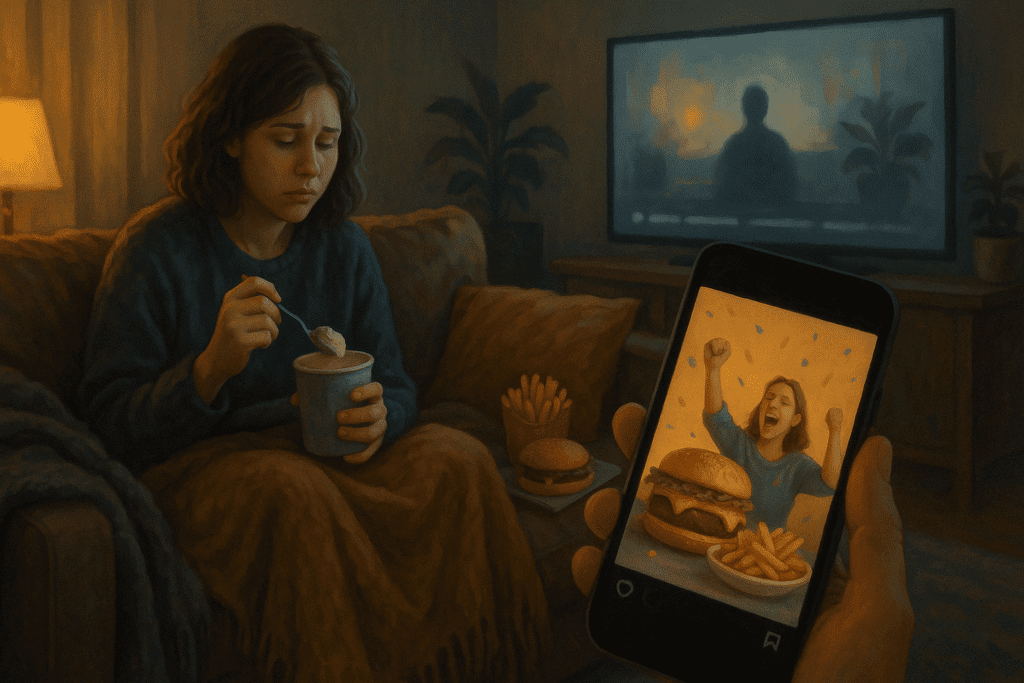
Cultural and Psychological Drivers of Dietary Change
Cultural norms around food have evolved rapidly, contributing to a permissive environment for overeating. The growing emphasis on indulgence, convenience, and self-care often translates into dietary decisions that prioritize pleasure over nutrition. Phrases like “treat yourself” and “you deserve it” have become mantras that normalize excessive caloric intake, especially in the form of high-sugar, high-fat foods.
Psychological research supports the idea that food choices are rarely purely rational. Emotional eating, driven by stress, boredom, or social pressure, is more prevalent than ever. The COVID-19 pandemic only amplified these tendencies, as lockdowns and isolation led many to seek comfort in food. This societal shift in the emotional function of eating contributes to a broader pattern in which people can eat more today than in decades past, not solely due to availability but also due to psychological needs being met through food.
Moreover, the globalization of food culture has introduced new cuisines and eating styles, broadening the culinary landscape but also expanding opportunities for overeating. All-you-can-eat buffets, food festivals, and binge-eating content on social media platforms further entrench the idea that eating in excess is not only acceptable but celebrated. These cultural trends support the argument that a history changing topic in nutrition recent years has been the growing social acceptance of overconsumption.
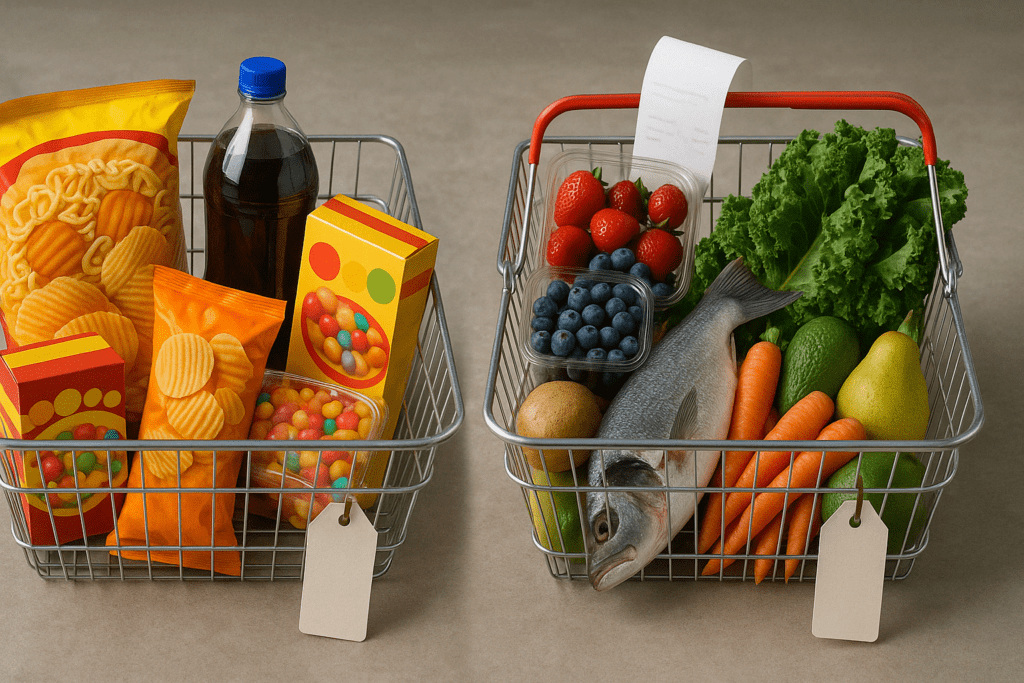
Economic Influences and the Cost of Eating
The economic landscape has also shifted dramatically in the past 20 years, influencing what and how people eat. On one hand, food has become more affordable due to industrial agriculture and globalization, particularly calorie-dense processed foods. On the other hand, healthy, nutrient-rich foods—fresh produce, lean proteins, whole grains—have become relatively more expensive, contributing to dietary inequities.
For lower-income populations, cost remains a dominant factor in food choice. Studies consistently show that when budgets are tight, people are more likely to purchase inexpensive, high-calorie foods with long shelf lives. Fast food, often seen as a cost-effective option, is a primary source of calories for many families. This economic pressure contributes to higher total caloric intake and poorer nutritional quality, especially in communities with limited access to fresh food markets.
Additionally, government subsidies for crops like corn and soy indirectly promote the production of inexpensive processed foods, further skewing the food environment toward high-calorie, low-nutrient options. These systemic factors help explain why people can eat more today than 20 years ago—not necessarily because they want to, but because the economic and policy landscape nudges them in that direction.

Technological Advancements and Their Dietary Implications
The digital revolution has played a subtle yet significant role in shaping eating habits. From calorie-tracking apps and wearable fitness devices to algorithm-driven food delivery platforms, technology has transformed the way people interact with food. However, while these innovations offer tools for better dietary control, they also enable behaviors that facilitate overeating.
For instance, food delivery services make it possible to obtain calorie-dense meals with minimal effort. The convenience of these platforms often leads to increased frequency of ordering out, particularly among younger adults. At the same time, algorithmic marketing tailors food advertisements to individual preferences, making it more tempting to indulge.
Social media also plays a dual role. On one hand, it provides access to health-focused communities and nutritional education. On the other hand, it promotes unrealistic body ideals and glorifies excessive food consumption through trending challenges and viral content. The net effect is a complex relationship in which people can eat more today than ever before—enabled, encouraged, and even entertained by the digital environment they inhabit.
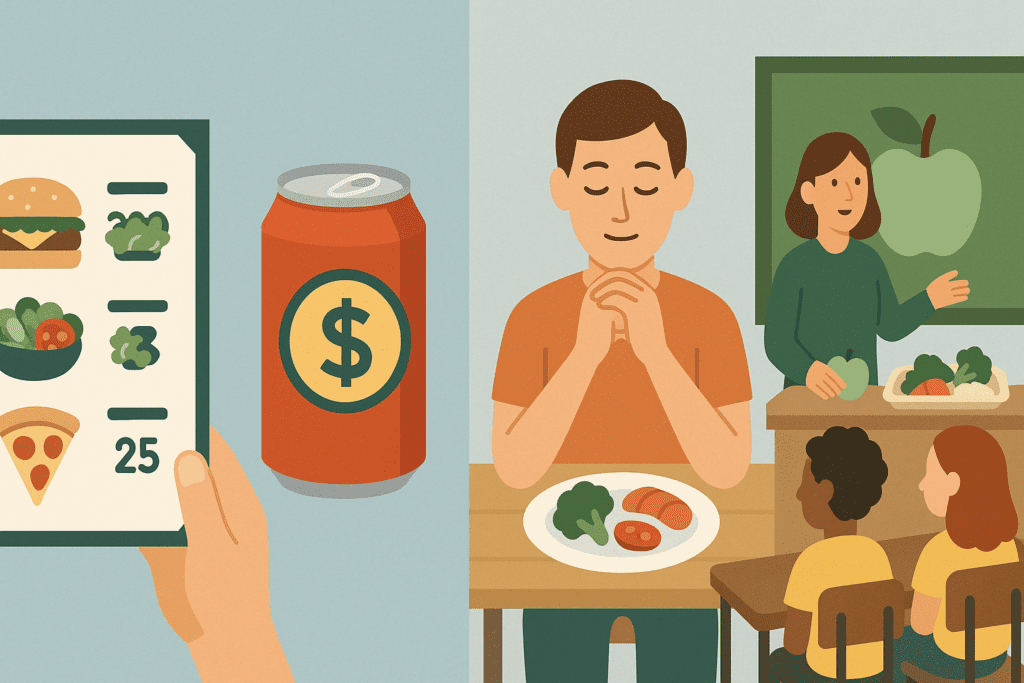
Public Health Responses and Policy Interventions
In response to these growing concerns, public health institutions have launched various campaigns and policy initiatives aimed at curbing overconsumption. Efforts such as calorie labeling on menus, sugar taxes, and restrictions on junk food advertising to children reflect an acknowledgment of the changing dietary landscape.
However, the effectiveness of these interventions varies. Calorie labeling may increase awareness, but it does not necessarily translate into healthier choices. Taxes on sugary beverages have shown some success in reducing consumption, but critics argue they disproportionately affect lower-income consumers. Despite these limitations, such initiatives reflect a broader recognition that the ability of people to eat more today than 20 years ago poses real public health risks.
In parallel, there has been a push toward more holistic approaches, such as promoting intuitive eating and food literacy education. These strategies aim to re-establish a healthy relationship with food—one that prioritizes nourishment, satiety, and mindful consumption over quantity. As such, they represent a critical frontier in addressing this history changing topic in nutrition recent discussions increasingly prioritize.
Reframing the Question: Is More Always Worse?
While the data suggest that people can eat more today than 20 years ago, it is essential to ask whether this is inherently negative. In some contexts, increased food intake can be a positive development, particularly in regions where undernutrition was once rampant. In such cases, better food availability reflects progress in public health and agricultural development.
Furthermore, the notion of eating more can be reframed to focus on eating more of the right things. Encouraging the consumption of fiber-rich vegetables, plant-based proteins, and healthy fats is a worthwhile goal that does not necessarily conflict with increased food intake. The challenge lies in guiding people toward better choices, not simply fewer calories.
By acknowledging this nuance, we can foster a more constructive dialogue around food. Rather than framing dietary evolution in terms of moral panic or restriction, we should aim for a balanced understanding—one that considers both the risks and opportunities inherent in our modern food environment.
Frequently Asked Questions (FAQ)
1. How has modern technology contributed to changes in how much food people consume today?
Advancements in food preservation, packaging, and delivery systems have made food more accessible and convenient, subtly encouraging overconsumption. Refrigerators, microwaves, and meal delivery apps allow people to eat more frequently without planning ahead. This ties into the broader history changing topic in nutrition recent—where accessibility, not just availability, has transformed eating patterns. Additionally, the explosion of ultra-processed convenience foods has increased caloric intake while decreasing satiety. These changes support the observation that can people eat more today than 20 years ago is not just a question of portion size, but also of food engineering and behavioral nudges.
2. What role does emotional eating play in today’s dietary habits?
Emotional eating has emerged as a powerful force behind dietary shifts in the last two decades. Stress, anxiety, and even boredom have become drivers of caloric intake, especially with the 24/7 availability of comfort foods. This psychological dimension is a history changing topic in nutrition recent because it reframes diet as more than physiology—it’s also deeply rooted in emotional coping. Compared to the past, can people eat more today than 20 years ago due to emotional factors? Absolutely—especially given the rise of sedentary lifestyles and mental health challenges, which are often medicated with food.
3. Have social media and food marketing changed our perception of how much we should eat?
Yes, profoundly. The glorification of food culture on platforms like Instagram and TikTok has normalized oversized meals and constant snacking. This phenomenon represents a history changing topic in nutrition recent, as visual stimuli can subconsciously increase appetite and frequency of eating. Can people eat more today than 20 years ago simply because they see more food all the time? In many ways, yes—the digital food environment has become as influential as the physical one, subtly encouraging more frequent indulgence.
4. How does portion distortion influence modern eating habits?
Portion distortion refers to our skewed perception of what constitutes a “normal” serving size. Over the years, restaurant and packaged food portions have gradually increased, leading to a recalibration of expectations. This is a classic example of a history changing topic in nutrition recent that has flown under the radar. Many people don’t realize that can people eat more today than 20 years ago is partly due to the subconscious normalization of excess. What was once a large drink or meal is now considered medium or even small by today’s standards.
5. How has snacking culture evolved in recent decades?
Snacking has become more frequent, less intentional, and more calorically dense. In previous generations, snacks were occasional and simple—like fruit or nuts. Today, hyper-palatable snacks are available everywhere, from gas stations to office break rooms. This evolution is a history changing topic in nutrition recent, signaling a shift in both food quality and eating frequency. Can people eat more today than 20 years ago because of snacking? Undoubtedly, as snack frequency and portion size have increased while nutritional value has often decreased.
6. Do food labels and nutritional transparency help people eat less?
While nutritional labeling is a helpful tool, its effectiveness varies. Many consumers either misunderstand or ignore these labels, and deceptive marketing can mask unhealthy ingredients. This dynamic has become a history changing topic in nutrition recent, as governments and advocacy groups push for clearer, more standardized nutrition information. Still, can people eat more today than 20 years ago despite these labels? Yes—because awareness doesn’t always translate into behavior change, especially when taste and convenience override logic.
7. What impact has food delivery and online grocery shopping had on consumption?
Food delivery apps and online groceries have made it easier than ever to access high-calorie, indulgent foods without leaving the house. This convenience has shifted how and when people eat, creating more opportunities for unplanned meals. The rise of these services is a history changing topic in nutrition recent, fundamentally altering the logistics of food access. When asking can people eat more today than 20 years ago, the answer is often linked to how frictionless food acquisition has become. With fewer barriers, impulse-driven consumption increases.
8. How does food insecurity paradoxically contribute to overeating?
Food insecurity can lead to binge eating during periods of food availability, especially when access is unpredictable. This scarcity mindset can program people to overeat when they have the chance, fearing future deprivation. It’s a lesser-known but important history changing topic in nutrition recent that complicates public health strategies. Even in affluent nations, can people eat more today than 20 years ago due to these psychological patterns? Yes—and this paradox underscores how food abundance and insecurity can coexist in harmful ways.
9. Are children today growing up with fundamentally different eating patterns than previous generations?
Yes. Children today are often exposed to sugar-laden foods at a younger age and face more aggressive food marketing across digital platforms. School lunches, after-school snacks, and even “healthy” cereals are frequently high in added sugars and sodium. This trend is a disturbing history changing topic in nutrition recent because early exposure to ultra-processed foods sets lifelong preferences and metabolic patterns. It also means that can people eat more today than 20 years ago is a trajectory beginning in early childhood, not adulthood.
10. What future trends might further influence how much people eat?
The intersection of AI-driven personalization, biotech-enhanced foods, and wearable health trackers may soon transform personal nutrition. However, without systemic regulation, these innovations could also lead to overconsumption disguised as “optimized eating.” Watching this evolve is essential because it represents an emerging history changing topic in nutrition recent with both promise and peril. As technology makes it easier to tailor diets, it could also make it easier to rationalize unhealthy choices. Therefore, can people eat more today than 20 years ago might shift from being a passive consequence to a consciously engineered outcome if trends aren’t carefully managed.
Conclusion: What the Evolution of Eating Tells Us About Modern Nutrition
The question of whether people can eat more today than 20 years ago opens a broader discussion about how food, culture, behavior, and policy intersect in modern life. Clearly, the answer is yes—caloric availability, food marketing, economic conditions, and behavioral shifts all point toward increased consumption. But this change is not merely a matter of volume. It is a complex, history changing topic in nutrition recent experts have been striving to decode.
From caloric surplus and declining nutrient density to shifting cultural norms and technological enablers, our dietary patterns have undergone profound transformation. These insights challenge us to think critically about not just what we eat, but why and how we eat. If we are to address the health implications of these trends, our strategies must go beyond restriction and embrace a more comprehensive approach—one that values quality, awareness, and equity in access to nutritious food.
Ultimately, the evolution of eating is not a simple tale of excess but a reflection of our broader societal priorities and challenges. As we look ahead, the goal should not be to fear eating more, but to understand it. By fostering informed choices and systemic support, we can ensure that the ability to eat more today becomes a tool for health, not harm.
Was this article helpful? Don’t let it stop with you. Share it right now with someone who needs to see it—whether it’s a friend, a colleague, or your whole network. And if staying ahead on this topic matters to you, subscribe to this publication for the most up-to-date information. You’ll get the latest insights delivered straight to you—no searching, no missing out.
Further Reading:
NOW AND THEN: The Global Nutrition Transition: The Pandemic of Obesity in Developing Countries
Too much of a food thing: A century of change in how we eat
What’s on your table? How America’s diet has changed over the decades
Disclaimer: The content published on Better Nutrition News (https://betternutritionnews.com) is for informational and educational purposes only. It is not intended as a substitute for professional medical advice, diagnosis, or treatment. Always seek the guidance of a qualified healthcare professional before making any changes to your diet, nutrition, or wellness practices. The opinions expressed by authors and contributors are their own and do not necessarily reflect those of Better Nutrition News.
Better Nutrition News and its affiliates make no representations or warranties regarding the accuracy, completeness, or reliability of the information provided. We disclaim all liability for any loss, injury, or damage resulting from the use or reliance on the content published on this site. External links are provided for reference purposes only and do not imply endorsement.


